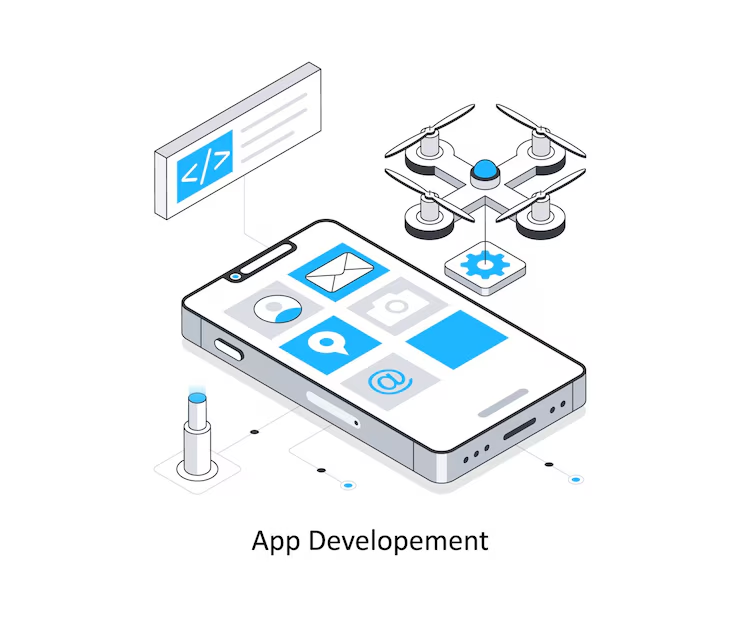Introduction
In today’s digital landscape, having a visually appealing website is not enough. To drive traffic and increase conversions, your website must be optimized for search engines and user experience. SEO-optimized web design ensures that your site ranks higher on search engines like Google, leading to better visibility, increased traffic, and higher conversion rates. This guide will explore key strategies to build an SEO-friendly website development that not only ranks but also converts visitors into customers.
Understanding SEO-Optimized Web Design
SEO-optimized web design is the process of creating and structuring a website in a way that enhances search engine visibility and user experience. It involves elements like fast page speeds, mobile responsiveness, intuitive navigation, and well-structured content that aligns with SEO best practices.
Key Elements of SEO-Friendly Web Design
1. Mobile Responsiveness
With mobile searches surpassing desktop searches, having a mobile-friendly website is crucial. Google follows a mobile-first indexing approach, meaning it primarily considers the mobile version of your website for ranking.
Best Practices:
- Use a responsive design that adapts to different screen sizes.
- Ensure fast loading times on mobile devices.
- Optimize images and media for mobile performance.
2. Website Speed and Performance
Page speed is a critical ranking factor. A slow-loading website can lead to higher bounce rates and lower conversions.
Ways to Improve Speed:
- Compress images without losing quality.
- Use a content delivery network (CDN).
- Minimize HTTP requests and enable browser caching.
- Implement lazy loading for images and videos.
3. User-Friendly Navigation and Structure
A well-structured website makes it easier for users and search engines to navigate.
Best Practices:
- Keep a clear and intuitive menu structure.
- Use breadcrumbs to enhance navigation.
- Maintain a logical hierarchy with proper heading tags (H1, H2, H3, etc.).
4. SEO-Optimized URLs and Site Structure
Clean and descriptive URLs help search engines understand the page content better.
Optimization Tips:
- Use short, keyword-rich URLs.
- Avoid unnecessary parameters and special characters.
- Implement a well-organized URL hierarchy.
5. Optimized Content for SEO
Content plays a major role in web design. Well-structured, high-quality content can improve rankings and engagement.
Content Optimization Strategies:
- Use target keywords naturally in titles, headers, and body text.
- Create informative and engaging content that adds value to users.
- Include multimedia elements like images, videos, and infographics to enhance readability.
6. Technical SEO Considerations
Technical SEO ensures that search engines can easily crawl and index your website.
Key Technical SEO Factors:
- Implement structured data (schema markup) for better search results.
- Use XML sitemaps and submit them to search engines.
- Ensure proper canonicalization to avoid duplicate content issues.
7. Internal Linking Strategy
Internal linking helps in distributing link equity and improving navigation.
Best Practices:
- Link to relevant pages within your content.
- Use descriptive anchor text for internal links.
- Avoid excessive linking; keep it natural.
8. Secure and Accessible Website (HTTPS & ADA Compliance)
A secure and accessible website builds trust with users and search engines.
Steps to Secure Your Website:
- Use an SSL certificate to enable HTTPS.
- Ensure your website follows ADA (Americans with Disabilities Act) guidelines for accessibility.
How SEO-Optimized Web Design Improves Conversions
A website optimized for both SEO and user experience increases engagement and conversions. Here’s how:
- Faster load times improve user satisfaction and reduce bounce rates.
- Mobile responsiveness ensures better reach and accessibility.
- Clear CTAs (Call-to-Actions) guide users toward conversions.
- SEO-friendly content increases organic traffic and engagement.
Conclusion
SEO-optimized web design is essential for businesses aiming to improve their online presence, attract more traffic, and boost conversions. By implementing mobile responsiveness, fast loading speeds, structured content, and a solid technical SEO foundation, you can build a website that not only ranks well but also delivers a great user experience.







